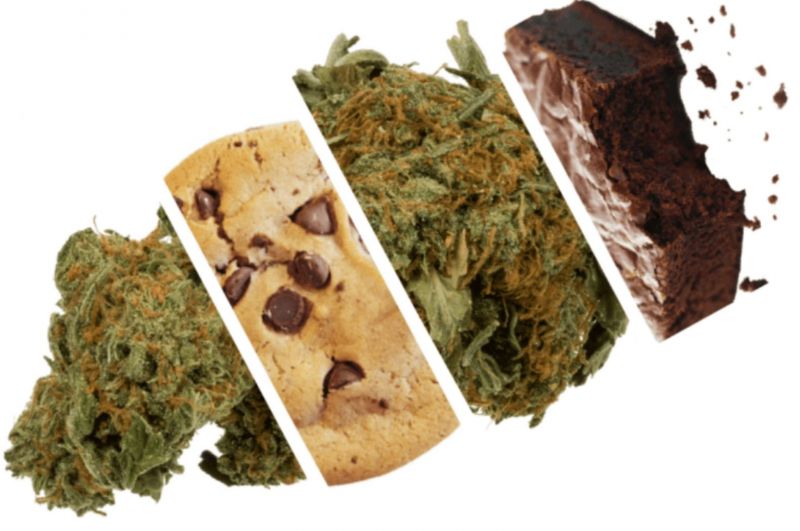
02/06/2022 Once you tick off these basic requirements, you’ll be able to infuse cannabis with virtually anything!
While Cannabis edibles are known to be much healthier and safer than smoking, they need that extra bit of time and attention to get it just right and make the most of everything the plant has to offer.
Basics first : Inhaling v/s Ingesting
You may think you’re consuming the same product, but the channel matters.
Cannabis smoke or vapour delivers THC - the chemical that gets you high. It enters your lungs where it passes directly into your bloodstream and then your brain. You feel the effect in just a few minutes, and it may last up to 6 hours.
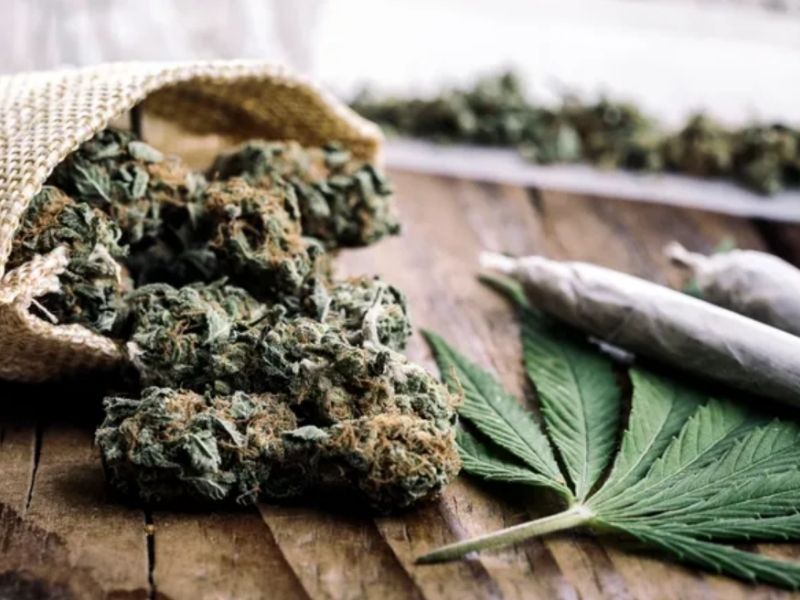
Image courtesy : GettyImages
Edible cannabis travels first to your stomach then to your liver before getting into your bloodstream and brain. The liver converts THC into a stronger form and this combined with the THC from the original product adds to the intensity of the high. You feel the effect after 30-60 mins of ingesting, and the effect may last up to 12-15 hours.
[[relatedPurchasesItems-36]]
Now we’re ready for the checklist.
1.The dosage maths
As mentioned above, you most certainly cannot consume the same amount of cannabis via edibles as you do via smoking it. So, how much do you use?
The easy answer -
If you are new to edible cannabis or cannabis, start low by consuming an edible cannabis product with no more than 2.5 mg of THC.
The right answer -
It is of utmost importance to figure out in milligrams the approximate amount of THC, CBD and CBG that you will need for the specific recipe you’re going to recreate with Cannabis.
How do you calculate that -
Technology!
We’re lucky to be living in a time and age where Google has all answers. There are a bunch of websites that will help you calculate the dosage you need. They all will provide approximately the same value, or a harmless difference - so don’t fret. Use any of the popular ones that are well acclaimed and widely reviewed, and you should be set.
You will need some basic information of how much THC, CBD and CBG is present in your material - so it is best if you buy it from a trusted budtender who has all the data, or grow it yourself.
Knowing your basic proportions will allow you to adjust your measurements, and keep you from making a batch that is too strong or too weak.
2.Medium
Cannabis compounds are considered lipophilic (fat-loving). That means any recipe using alcohol, oil, or butter can be infused with cannabis. Recipes without alcohol or fat can be created using cannabis concentrates.
Cannabis tinctures, cannabis-infused coconut oil, cannabis butter - feel free to experiment away. Most of these infusions can be stored for later as well, so have a good look at your every day diet and palate, and see what might be the most versatile medium for you.
That way, you’ll also ensure you don’t use too much in the same recipe just to finish it off.
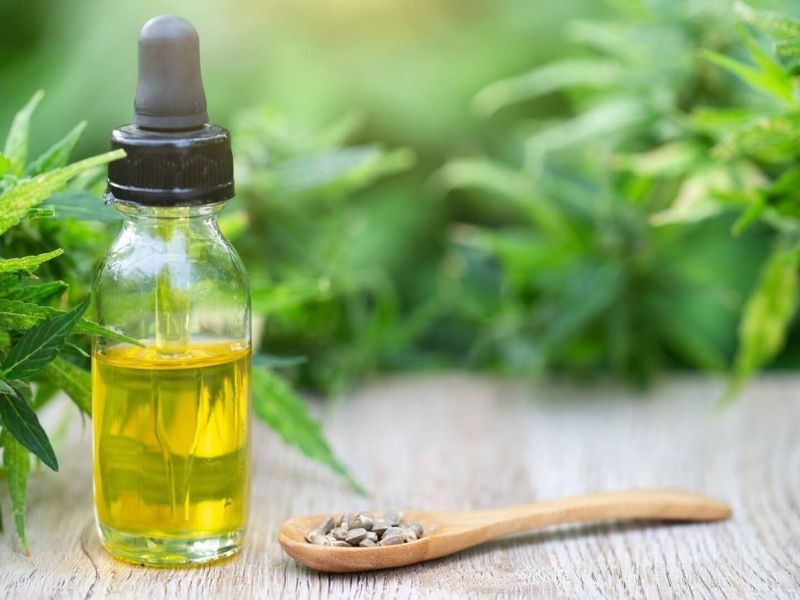
Picture courtesy : WikiLeaf
3.Understand Decarboxylation
It is a big word - and important too, but we promise once you get the hang of it you’ll see that it isn’t rocket science at all.
When you cook with cannabis, heat changes the chemical properties of the plant material. This process is called decarboxylation. It turns the non-intoxicating THCa into THC and CBDa into CBD.
If you’re looking to create edibles that have THC and CBD in them, and want to get the most out of your plant material, decarboxylation is a necessary step.
Cooking with raw cannabis will not result in the mind-blowing and delicious edibles you think it will. Decarboxylation is a process that converts the THCA that coats raw cannabis buds (crystals) into the psychoactive THC responsible for marijuana’s mind-altering effects. Sometimes this can happen during the baking process itself, but it’s best to ensure that your cannabis has been ‘activated’ before cooking with it.
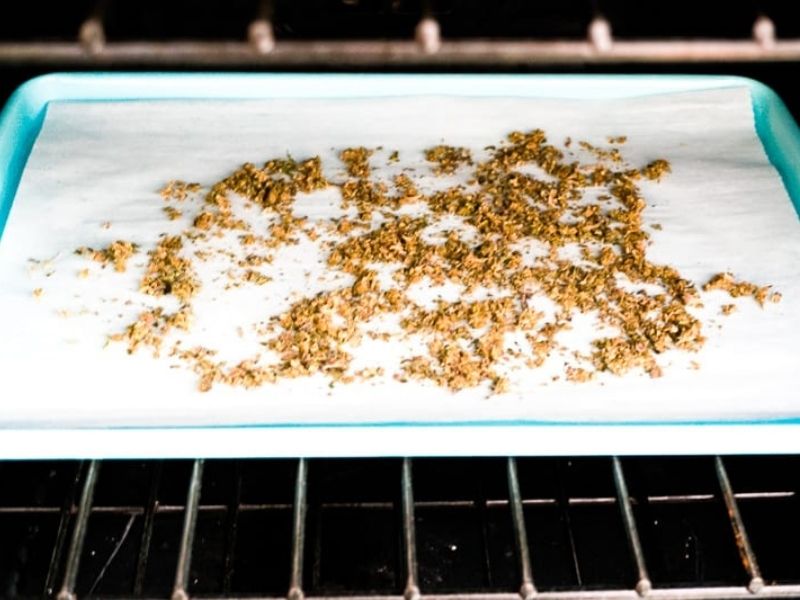
Image courtesy : Cannabisspatula
How to decarb your weed, you ask? 3 simple steps -
-Preheat the oven to 215 degrees Fahrenheit (decarb temp)
-Spread grounded buds evenly across baking sheet
-Bake for 60 minutes You can check your weed half way through, its color should turn from its normal fresh weed color, green into light brown-ish. The end result will be brown and dry.
4.Keep an Eye on the Heat!
That being said, it is important to get your temperatures and cooking times right. Knowing how long and at what temperature to decarboxylate and cook your cannabis is crucial to producing a tasty, potent edible.
Overcooking your cannabis at any part of the process can damage or diminish its potency, making the final edible less impressive.
If you cook at too high of a temperature, you can destroy the cannabinoids and reduce the potency of your weed. Make sure to keep the heat below 350 degrees Fahrenheit. Cannabis cooks best at low heat, so when cooking with weed, it is best to simmer rather than boil. Boiling can damage cannabinoids.
THC and other chemicals in cannabis start to degrade at temperatures that exceed 350 degrees Fahrenheit, making your edibles less potent than expected. It’s best to avoid recipes that require higher heat or opt to add your infused ingredient later in the process.
Be sure to keep an eye on the oven’s temperature while cooking. We suggest aiming for about 338 degrees Fahrenheit/170 degrees Celsius to stay safe and avoid burning off any cannabinoids.
5.Make a second batch
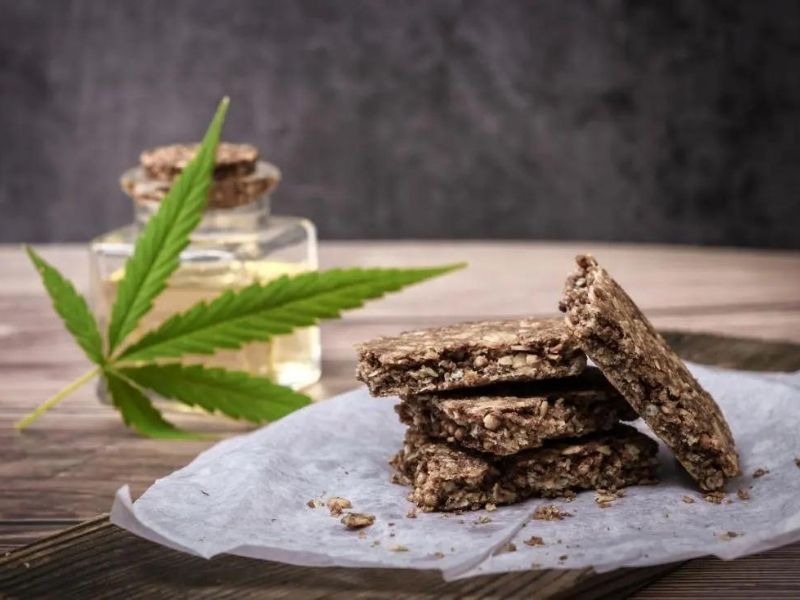
Image courtesy : Medicalnewstoday
This may sound like silly, but trust us - edibles take much longer to hit you than joints, which may tempt you to eat in larger quantity. If you’re cooking anything that you’d like to eat more than one of, like your favourite dessert, then make a non-infused batch.
In order to keep from eating too many cookies and consuming too much THC, always make backup cookies to munch on.
This won’t affect the high you get, or the duration but it will simply make sure that it is a pleasant feeling.
Written by Stuti Khetan, Beverage Trade Network
TAGS:






